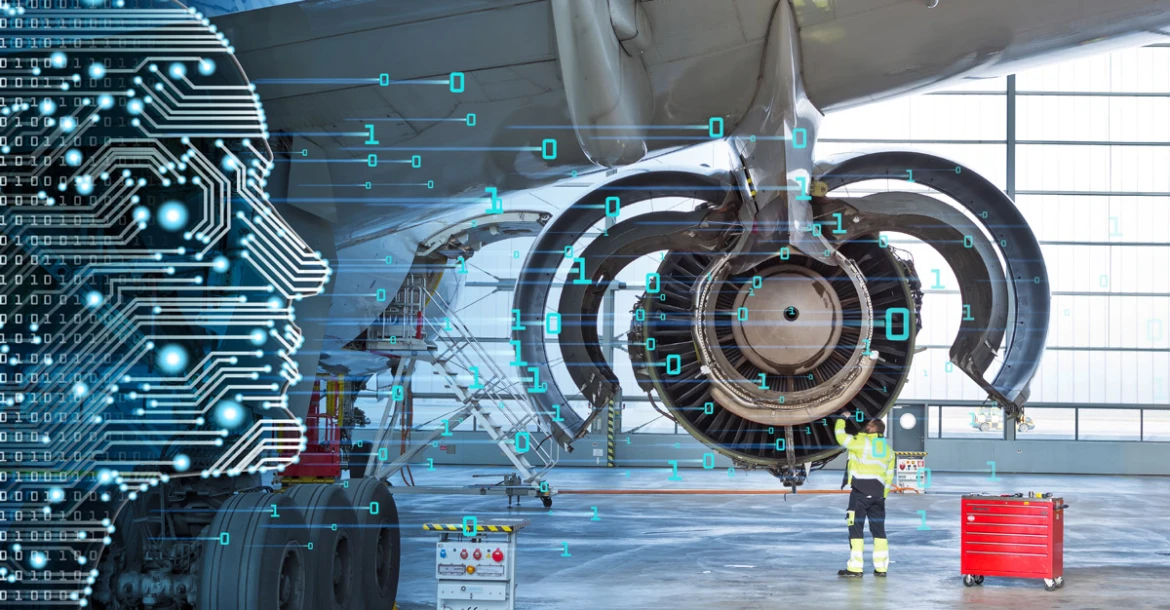aviation
Fast and precise: Calculating proposals with big data
MTU Maintenance’s new Advanced Proposal Calculation 2.0 is a pioneering digital project that will benefit airlines and MRO providers equally.
author: Thorsten Rienth | 4 mins reading time published on: 19.05.2021
author:
Thorsten Rienth
writes as a freelance journalist for AEROREPORT. In addition to the aerospace industry, his technical writing focuses on rail traffic and the transportation industry.


If you want to operate engines as cost-effectively as possible, you really need the power to see into the future. Maintenance contracts tend to run for 10, 12 or sometimes even 15 years. A lot can happen over that span of time: the oil price rises and falls; new aircraft replace older ones; material prices suddenly skyrocket in the face of shortages. Calculations that add up early on can end up way off.
Data sets, artificial intelligence and heuristics enable novel approaches for reliable forecasts
- Big Data and AI take MTU to the next level
- High-performance storage for the engine business
- Fast and precise: Calculating proposals with big data
- Searching documents using artificial intelligence
- New data management system for engine test data
- Mastermind for MTU production

“The path to APC 2.0 is a challenge of the first order in terms of complexity: data science models, expert knowledge, artificial intelligence, algorithms—and a project setup that spans numerous MRO sites and functionalities. As with all major digitalization projects, we mustn’t underestimate the degree of culture change involved. At the end of the day, expert knowledge is being passed to a machine here. That makes winning the experts’ trust and getting them motivated for the project another challenge to overcome. It calls for everyone to be willing to embrace change. I’m thrilled at how quickly our colleagues can adapt to new software and programming languages.”
Senior Manager Engine Programs at
MTU Maintenance Hannover
Claus Bullenkamp’s job title at MTU Maintenance Hannover might be Senior Manager Engine Programs and not Senior Clairvoyant, but in fact the two roles have more in common than you might think. True, Bullenkamp doesn’t have a crystal ball in his toolkit. Instead, he has software that uses data sets, artificial intelligence and heuristics to calculate scenarios and the probabilities behind them.
After all, when it comes to the complex issue of calculating proposals in the MRO business, almost everything depends on the scenarios underpinning them and on the probability of these scenarios actually playing out during an engine’s service life. “The spare parts market fluctuates enormously—and so do the availability and prices of components and materials that are essential for maintenance,” Bullenkamp says. Might it make more sense to send an engine for a general overhaul after eight years instead of ten? That’s a move that could well pay off if, say, “certain material costs, which again make up a considerable share of maintenance costs, are likely to shoot up in the following two years.”
These calculations also work the other way around. If, for example, it were foreseeable that a large number of engines of a certain type would soon be coming onto the market as a result of a major airline changing its fleet, “then in that case, running your current engines to the end of their remaining service life without leaving much of a margin would be an acceptable risk—and would probably end up being more cost-effective.” And in the unlikely event that everything turns out differently? “Then we’d be able to provide the customer with a replacement engine without fuss, thanks to MTU Maintenance Lease Services, our joint venture with Japan’s Sumitomo Corporation.”
Unique selling proposition: MTU data engineering couples data from flight operations with decades of engine development expertise
That’s by no means the end of the long list of ifs, buts and maybes that all need to be factored in. What kinds of repairs an engine might need over its lifetime, and when it might need them, depends on its specific flight profile. On whether the aircraft mainly flies short-haul routes, which cause lots of wear, or spends three or four hours per flight cruising, which causes little wear. Or whether the jets in question mainly operate in desert areas, where the sandy air acts like the finest sandpaper.
This is where a decisive MTU plus point comes in. “We can contribute not only our knowledge of data from day-to-day engine operations, but also all the expertise we’ve gained from decades of engine development.” Putting this knowledge into context and feeding it into MTU Maintenance’s engine fleet management for optimum shop-visit scheduling delivers a truly unique selling proposition. “No one else in the industry can do that to the same extent or as fast as we can,” Bullenkamp says.

Seeing ahead: Using AI, Claus Bullenkamp is able to make more reliable forecasts for realistic scenarios, enabling airlines to plan their maintenance activities with foresight.
Sophisticated heuristics and algorithms give airlines foresight for maintenance planning
Everything flows together into a giant data hub of a project called APC 2.0, which stands for Advanced Proposal Calculation. The 2.0 indicates that this is the next generation. “The previous version already put us in a very good and successful position in the industry,” Bullenkamp says. Now, the next stage is taking shape. With artificial intelligence classifying and evaluating big data drawn from MRO operations. With sophisticated heuristics and algorithms, peppered with developer and MRO know-how as well as market data from all corners of the world. It’s as if Bullenkamp is turning a spyglass on tomorrow’s market environment. Calculating the best forecast for the most realistic scenario is what it’s all about. And adapting that forecast in real time to constantly changing circumstances.
APC 2.0 is of equal benefit to airlines and MTU Maintenance. “We’re literally in the same boat here,” Bullenkamp says. “Or, to stick with the imagery, on the same plane.” Airlines benefit from proposals based on much more reliable calculations, which will soon take only days instead of the weeks that they so often took in the engine business in the past. In the fast-paced world of aviation, this is a real advantage. In the project’s second generation, proposal calculations also have a completely new “point of truth”: since the data is of such high quality and dependability, it provides a much more reliable view of the future, with risk spread less widely.
APC 2.0 is expected to become operational in 2023
As for MTU, the new forecasting quality arising from the interaction of engine fleet management and APC 2.0 enables increased efficiency in material procurement. But more importantly, MTU can improve its operational planning.
APC 2.0 will become operational in phases throughout 2023 for individual applications, and its underlying model should be scalable for further engine types.







